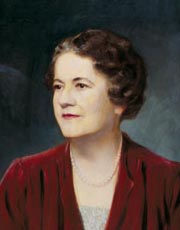NewRuins Mission Statement
There are several interwoven layers to what NewRuins is designed to accomplish. They are not mutually exclusive and there is no real priority. But one has to come first in any writing and my choice is simply personal.
Intrigue and Aesthetics
Ruins are often very beautiful. They do not affect everyone the same way but if the number of travelers that visit the Pyramids, the Acropolis and the Colosseum can be used a guide, many people feel compelled to see the world’s most famous ruins. Their beauty is greatly enhanced by the intrigue of pondering who built them and what stories are told by them.
NewRuins hopes to encourage and foster an appreciation of the aesthetics of the ruins in America. Most North American ruins are very young compared with Mayan temples or Etruscan tombs but in their own right, they are also beautiful and tell many stories. They are in fact the stories of our recent relatives.
Sharing and Compiling Our History
There is a wealth of archeological value across North America and the history of the native peoples in what is now the United States of America is rich and fascinating. But the NewRuins project is called “New” because it is devoted to the ruins that have resulted from our most recent past, most typically from the general beginnings of the period now called the Industrial Revolution.
America’s growth and prosperity exploded thanks to the industries that, for better or for worse, took root in the abundant natural resources and the abundant quantity of workers who came from all over the world to make better lives for themselves and their families. They built, chopped, dug, sawed, hammered and burned tirelessly. The result was a country fully capable of becoming the “arsenal of democracy” by 1940 and producing an unheard of quantity of food, machines, and the complex tools of the Second World War.
Most of the locations where the industrial revolution began, and arguably ended, are now gone but some ruins do still remain. They can tell wonderful stories. Stories about our now deceased relatives and stories that shaped who we are today, as individuals and as a country of immigrants. Sadly, as the old and unwanted sites become ruins, they quickly become fodder for the bulldozers of progress.
Saving Our Ruins
This may sound like rather a far fetched notion to some but we need to protect and find value in our ruins before they are completely gone. Those who are creative, pragmatic or financially aggressive are always looking for ways to replace old with new and create their own legacy. This is a natural state of being for our specie. But preserving our culture and history is also a natural inclination.
The first time I visited Rome and walked into the old city ruins I was struck by a cultural contrast that troubles me more as I grow older. If that had been my home town in the United States, such valuable land in the center of the city would long ago have been demolished and replaced by a series of new commercial structures. Why did the Italian people save those old ruins? We owe them and all of the descendants of the ancient cultures a debt of gratitude for preserving so much of their past.
But what of we, the current leaders of the free world? Can we say as much? Are we preserving enough of our past, even if that past is often an old industrial site with fallen brickwork and rusting machinery? NewRuins hopes to encourage people with an interest in these things to protect and share family stories and archives. As more of us become interested and knowledgable about remaining historic sites and ruins in our communities, “progress” may not always require that something old and interesting be destroyed.


